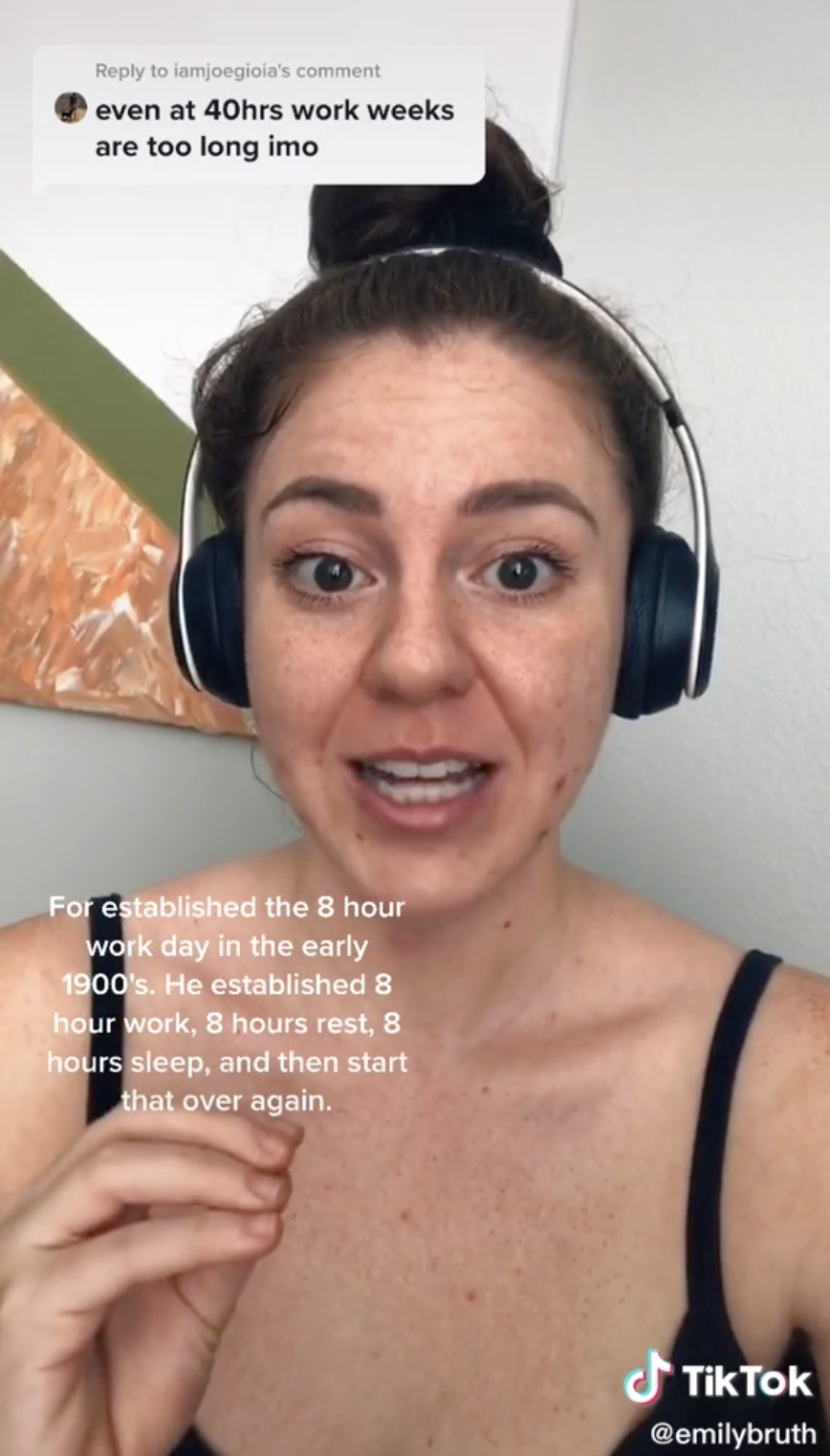Emily Ballesteros is a burnout management coach who helps busy professionals create work-life balance so that they have time and energy to enjoy their lives.
Recently, in an effort to spread awareness about problematic mindsets in the workplace, Emily made this TikTok:
Her video was viewed by over half a million people, and many commenters gave her the opportunity to address her beliefs surrounding the 40-hour work week. That video now has over 1.5 million views:
Emily explains, "Ford established the eight-hour workday in the early 1900s. He established eight hours work, eight hours rest, eight hours sleep, and then start that over again. We went wrong in two places. The first is that Ford worked in manufacturing, which means someone standing somewhere for eight hours doing approximately the same task does yield a certain amount of productivity. We have rolled over this eight-hour framework into industries where it just does not make sense. There are so many industries that are project-based where you don't need eight hours, and by just having someone keep themselves busy for eight hours, you're losing so much productivity."

